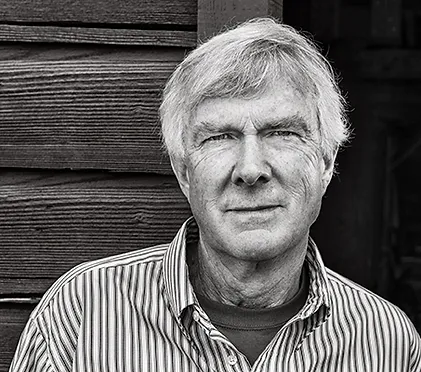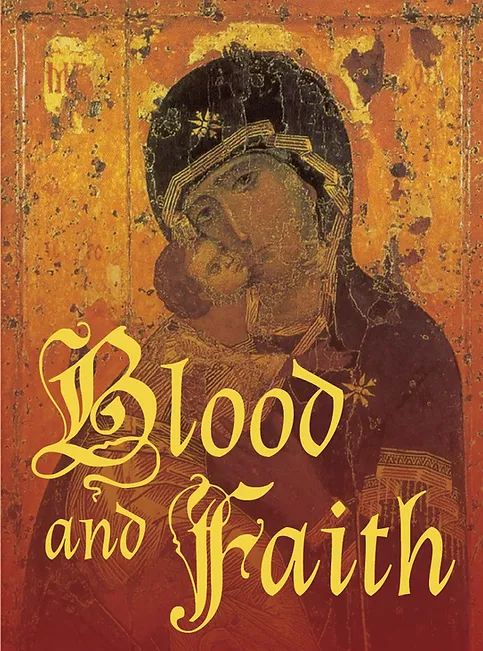 John Frohnmayer is a lawyer, writer, and arts leader who served as the fifth chairman of the National Endowment for the Arts (from 1989-1992) and as the chair of both the Oregon Arts Commission and Oregon Humanities.
John Frohnmayer is a lawyer, writer, and arts leader who served as the fifth chairman of the National Endowment for the Arts (from 1989-1992) and as the chair of both the Oregon Arts Commission and Oregon Humanities.
Born in Medford, where he now lives, Frohnmayer attended Stanford University, the Union Theological Seminary in New York and then the University of Chicago, where he studied Christian ethics. He also earned a law degree from the University of Oregon, serving as editor-in-chief of the Oregon Law Review.
His books include a memoir, Leaving Town Alive: Confessions of an Arts Warrior, a series of essays titled Out of Tune: Listening to the First Amendment, a musical comedy called SPIN! about his experiences at the NEA, and a trilogy of books on sport.
Blood and Faith, published in 2022, is his first novel.
Ed Battistella: How did you come up with the idea for Blood and Faith?
John Frohnmayer: I have always been interested in the interplay between politics and religion. As the famous theologian Reinhold Niebuhr pointed out, it is an uncomfortable interaction because religion is about absolutes and politics is about compromise (at least it is supposed to be). Article Six of the Constitution prohibits any religious test as a qualification for any office or position of public trust. Yet, during my tenure as Chairman of the National Endowment for the Arts, I got a snootful of drivel from conservative religious leaders about art they perceived as being blasphemous, so I thought I would explore this issue in fiction and see what happened.
EB: I have to admit that I did not know about the Vladimir Mother of God icon. I had to look it up and found that it was a real 12th century icon now in a Moscow museum. It never occurred to me that such a work might be an object of fundamentalist protests.
JF: Symbolism is the stock and trade of both art and religion. Likewise, both religion and art go through periods of reductionism—stripping away the baggage and getting back to the fundamental essence. As examples that might prove either too much or too little, consider the Renaissance and the impressionist movements.
So in Blood and Faith, the main religious character is preaching religion as being of the word and the word alone. As he and his followers perceive the Mother of God Icon, it is a graven image like the Biblical golden calf and, wrapping themselves in the First Amendment, they see its presence as a governmental endorsement of religion.
EB: I especially enjoyed the history of Eastern Orthodoxy and discussion of the role of icons. As a writer, how did you work through the exposition of history and the story-telling? Other writers have told me that can be a challenge.
 JF: Trying to explain or deconstruct the power of an artwork, let alone a religious artwork, is a fool’s errand (for example, one can’t say in words why a Bach chorale is inspirational). But I have always loved both history and research. What I found most interesting about Icons is that they play a role similar to sacraments in western religion whereby the icon is an intercessor—a window—to help the believer communicate with God. The Icon thus becomes extraordinarily powerful and I wanted to put that power in the political realm and see what happened. The results proved to be explosive.
JF: Trying to explain or deconstruct the power of an artwork, let alone a religious artwork, is a fool’s errand (for example, one can’t say in words why a Bach chorale is inspirational). But I have always loved both history and research. What I found most interesting about Icons is that they play a role similar to sacraments in western religion whereby the icon is an intercessor—a window—to help the believer communicate with God. The Icon thus becomes extraordinarily powerful and I wanted to put that power in the political realm and see what happened. The results proved to be explosive.
EB: You’ve written memoir, nonfiction about the First Amendment, and books about the philosophy of rowing, ethics in golf, and the poetry of skiing, but this was your first novel. What was the experience like for you? Was it much different from your other literary efforts?
JF: The irony of all this is that I wrote this novel 30 years ago, just after I had written Leaving Town Alive. I showed a draft to a writer friend and he suggested that I put it in a drawer which I did for the next decade and a half. Then I almost threw it away, but realized the conflict between Russia, Ukraine, and the United States made it more relevant today that when I was making it up.
But the short answer to your question is that I love making up the story and playing with history and life experiences such as doubt and faith. I have already drafted a sequel to get my protagonist, Lara Cole, in some more trouble.
EB: You had a robust cast of characters: politicians, fundamentalists, lawyers, museum staff, art experts, FBI agents, assorted scoundrels, most with. Did you base any of them on real people or simply imagineer their backstories?
JF: All of the characters are composites of people I have known or known about, so all are thoroughly fictional, but the Judge in the trial scene is based on the Honorable Gus Solomon who sat on the Federal Bench in Oregon for 40 years and scared the pants off the lawyers who appeared before him.
EB: Blood and Faith has prompted me to want to read more about the history of Ukraine and its relation with Russian. Any books you’d recommend?
JF: The Art of the Icon by Paul Evdokimov is a thorough exposition of both iconography and the history of the Eastern Church. While Rome fell in the early fifth century, not a crash bang fall, but a slow dissolution leading to the dark ages in western Europe, Constantinople soldiered on with orthodoxy until the fifteenth century and was a fascinating center of art and learning.
EB: What are your plans for a further novel?
JF: Stay tuned. Thanks for the interview.

 Follow
Follow